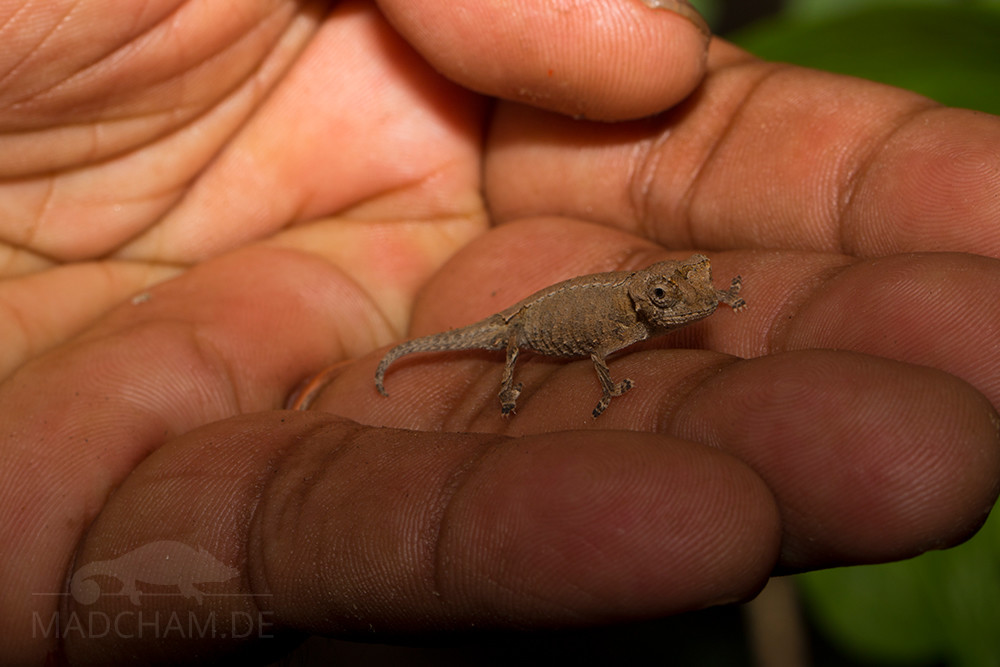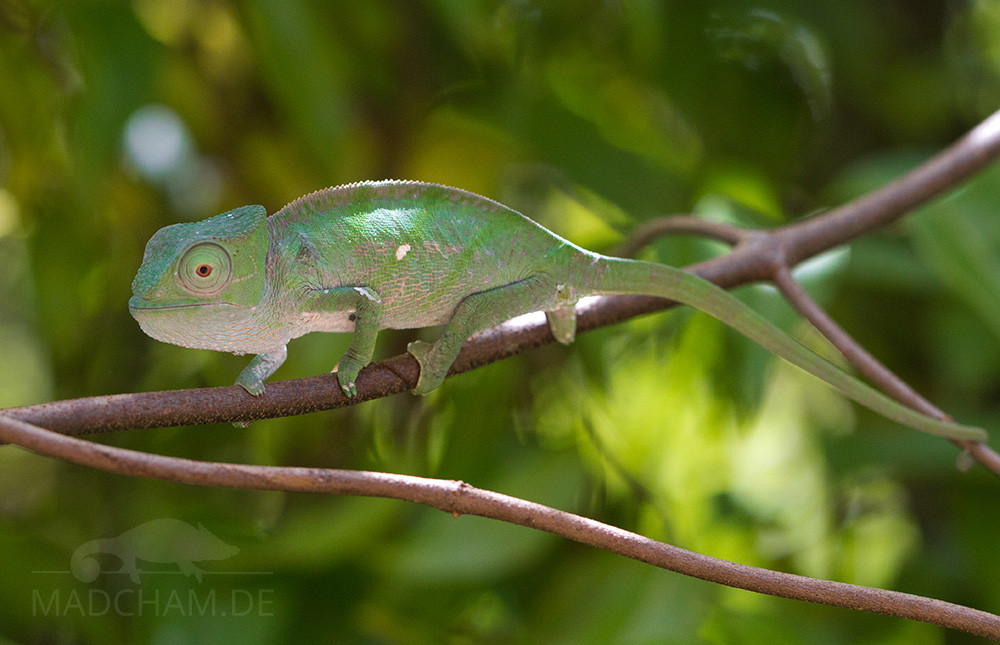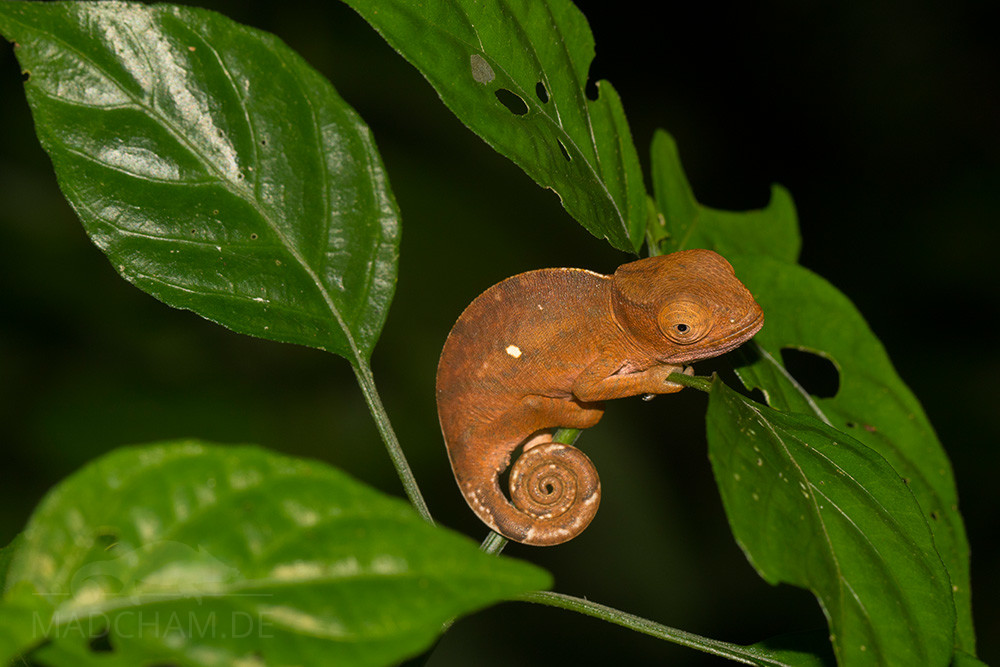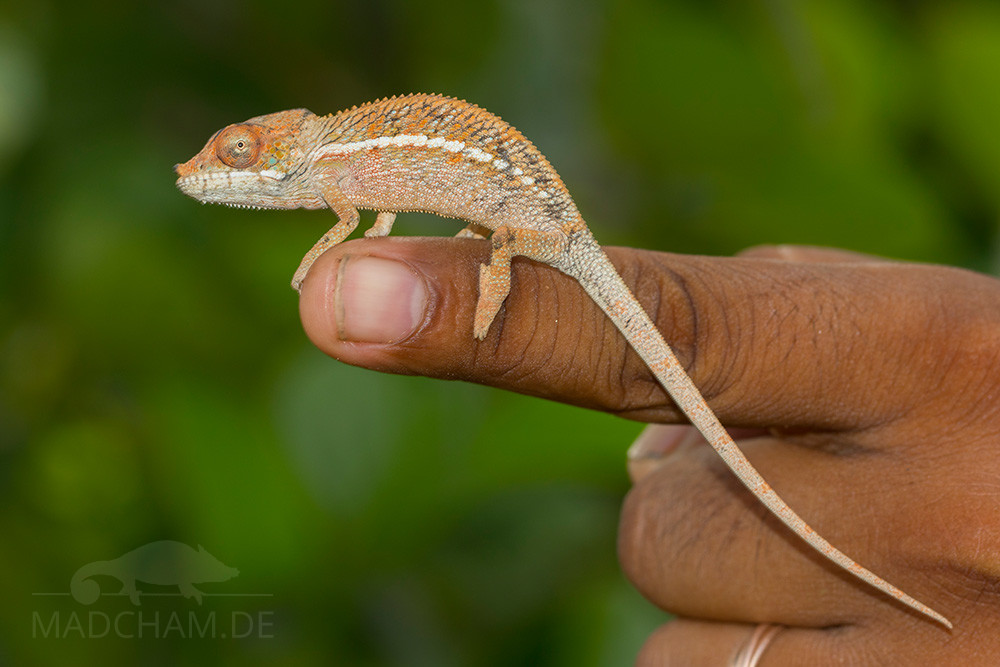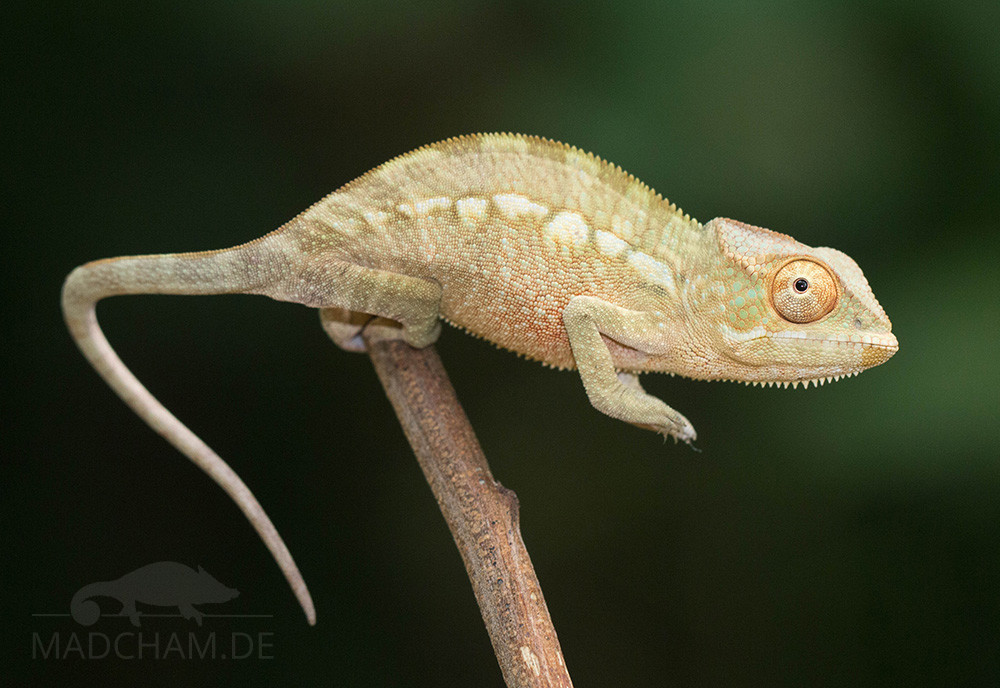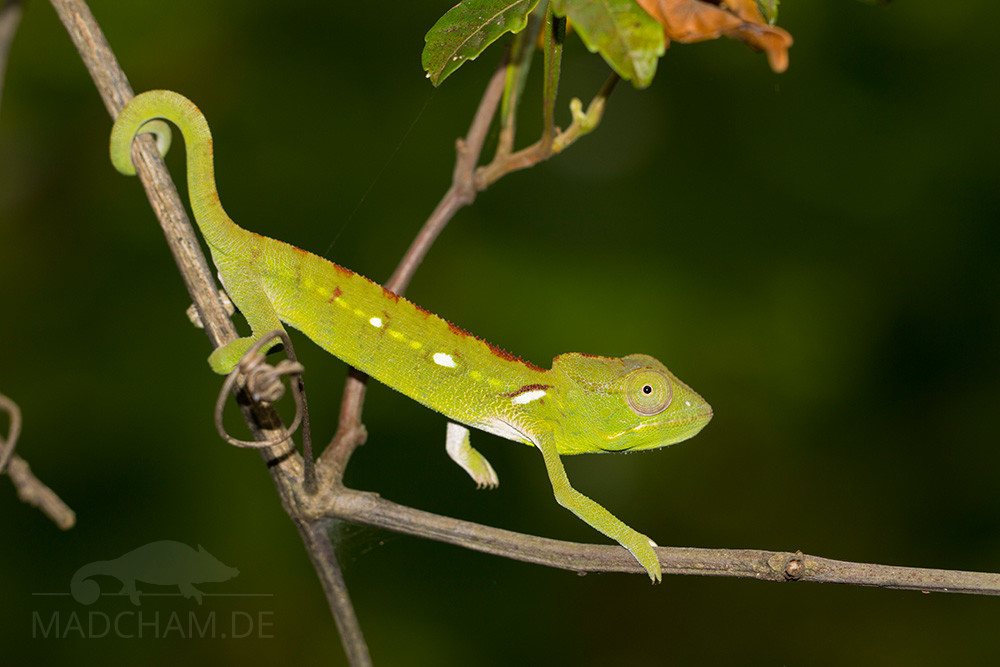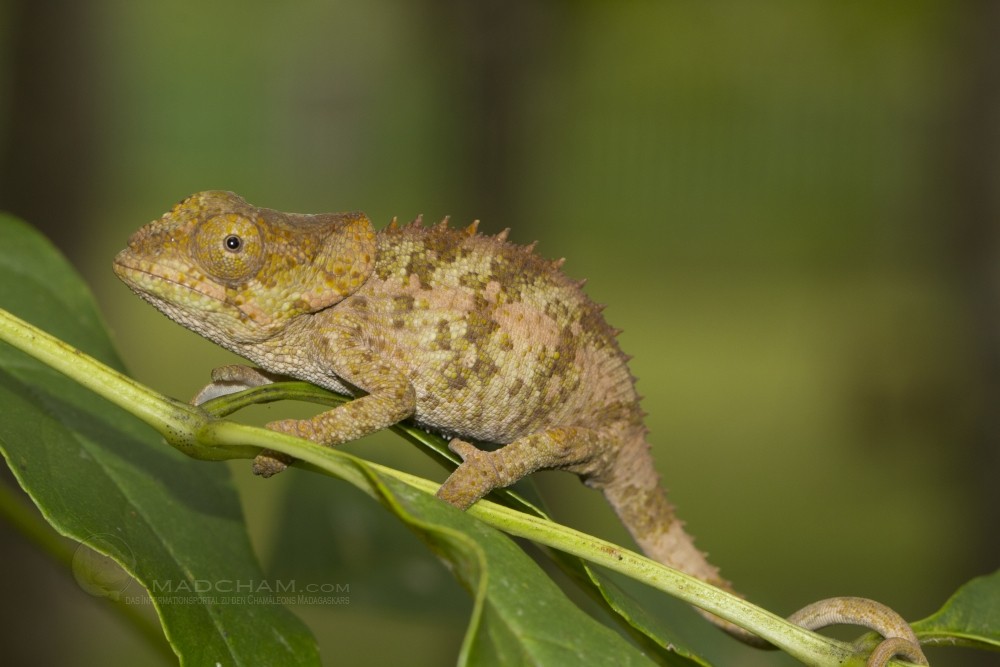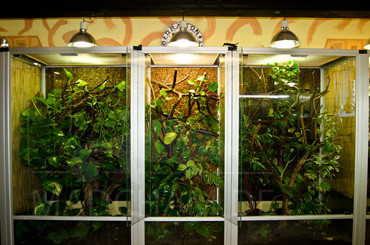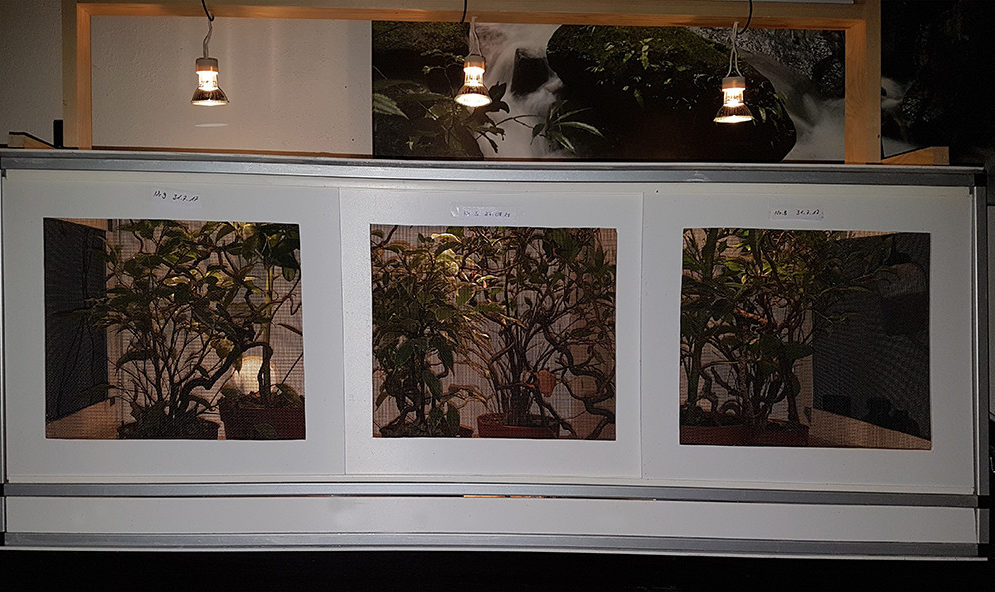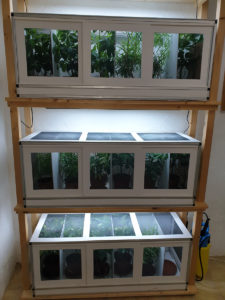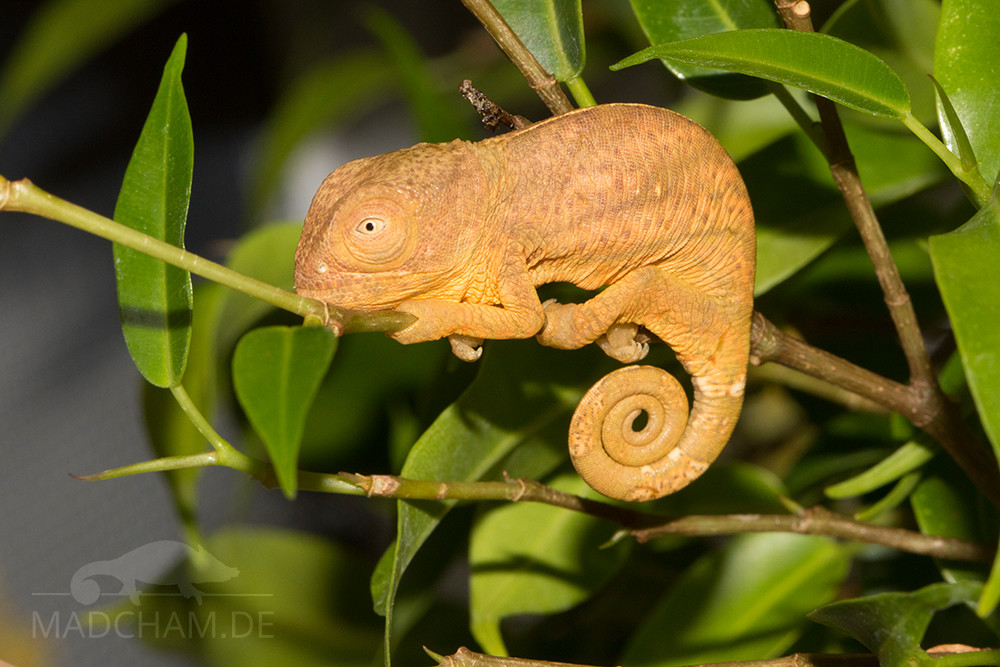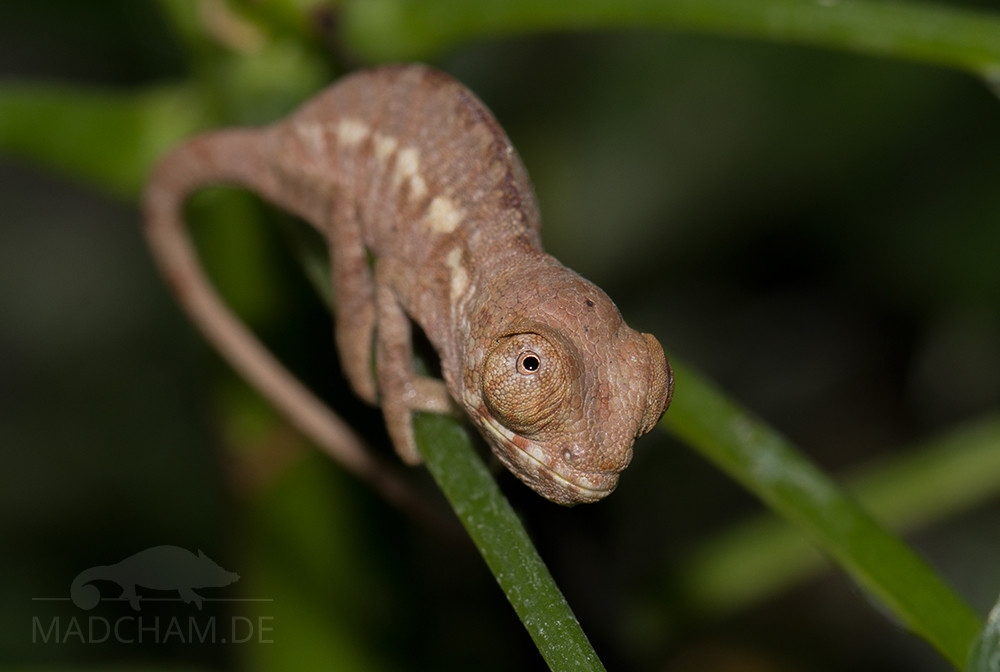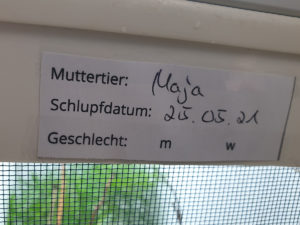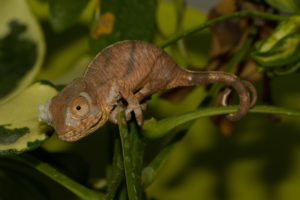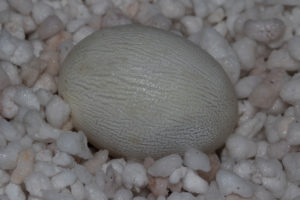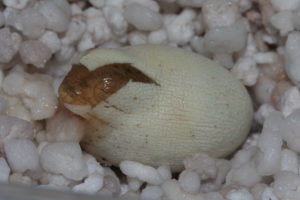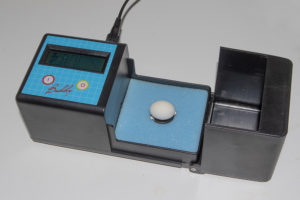When you successfully mated your chameleons, the female laid her eggs also successfully and egg incubations went well, it is time for the juveniles to hatch and thus you have to rear the offspring. But actually, how do you raise young chameleons? What to pay attention to? In this article, we want to give some suggestions.
The right terrarium
For chameleon offspring you need matching offspring cages. Size of the cages depends on the species you want to keep. For example, hatchlings of a Brookesia species are naturally much smaller than a juvenile of Calumma parsonii. With panther chameleons we made good experiences with offspring terrariums in 30 x 30 x 50 cm (width x length x height) for five juveniles. For Parson’s chameleons, we use 30 cm x 20 cm x 20 cm in the beginning, later 30 x 40 x 40 cm for each hatchling. Like adults’ cages, offspring terrariums should have spacious ventilation screens. It is also favorable to have easy-to-clean cages for young chameleons.
Whether you want to use bioactive ground or keep the juveniles on paper towels during their first weeks, is a matter of taste. When choosing paper towels please be aware that you will have higher cleaning efforts. Every offspring cage should contain alive plants, may it be inside their pots or directly planted into soil. As thin branches, Hazlenut and Chinese Willow have proven to work perfectly for us. Especially important for juveniles is to get UV-B which is vital for their growth. You can either use fluorescent tubes with UV-B components or metal halide lamps right above the cage (be careful to use the required minimum distance) or use an additional Osram Vitalux 300 W daily for 30 minutes from a distance of 80-100 cm.
For years we have raised young animals with halogen lamps and daily Vitalux irradiation. Our last offspring were kept with equally good results under an Arcadia Pro T5 UV-B kit with an 850 mm D3 Forest 6% UV-B (39 W) at a distance of 20 cm from the lid gauze. With temperatures, you have to be rather careful in juvenile chameleons. Many species do not tolerate high temperatures as juveniles. So we suggest keeping all offspring terrariums below a maximum of 28°C. You need to clean your offspring’s cages on a regular basis, at least weekly. Feces, feeder, and supplement residues have to be removed from leaves and branches. Paper towels should be changed every few days.
Single or groups?
Generally, chameleons do not like to be around other specimens. Juveniles are an exception because you can often raise them for few months together in groups. In species such as Furcifer lateralis, Furcifer pardalis, or Furcifer oustaleti we made good experiences in raising groups of juveniles. These juveniles feed better on insects when kept in groups and mostly tolerate each other well. Generally, in groups, all juveniles need to have enough possibilities to retreat. All groups should be split up depending on size, so only same-sized juveniles are part of the same group. It might be necessary to re-arrange the groups from time to time because juveniles grow differently and some may be larger than others. Please always have some separate cages available just in case single juveniles are especially aggressive towards others.
When raising juveniles in single cages, you may need lots of terrariums depending on clutch size. This means much higher financial efforts and a shortage of space. In sensitive species such as Calumma parsonii parsonii, Calumma parsonii cristifer, or Furcifer minor it has proven to be easier to raise offspring in single cages than in groups. This way you can better control every individual juvenile, you know how much everyone ate and can put notice papers on each cage.
Feeding
Freshly hatched juveniles usually still have a small yolk sac. As long as they have this, they do not need to feed on insects yet. As soon as the yolk sac is gone, the small chameleons should eat their first feeders. From the beginning on they are able to hunt, climb and shoot. You only have to adjust the feeders’ size to the small chameleons. As first food, fruit flies have proven to work well for all Malagasy species. Exceptions are terrestrial chameleons, where the hatchlings are sometimes so tiny that one has to resort to even smaller food animals like springtails.
To prevent the fruit flies from wandering all over the terrarium room, we put an orange slice in a small plastic flowerpot coaster during the first weeks. The fruit flies that are not immediately consumed collect on this. The orange slices must be changed every three days and the coasters must be rinsed thoroughly so that nothing molds. The little chameleons soon learn that there is food right there. Later we change from orange slices to yogurt cups. When eating the first tiny feeders well you can slowely expand the offered diet to aphids, firebrats, bean weevils and other feeders until they finally deal with the size of young crickets and freshly hatched grasshoppers. Hatchlings should be fed daily so there is plenty of food inside the terrarium all day long and the juveniles can eat any time. The first time of less food may come with the juvenile moving to its new home.
Supplementation
Especially in juvenile chameleons, good supplementation of feeders is essential. With each feeding, feeders are powdered with calcium and vitamin supplement in alternation. For years we have been using Korvimin ZVT + Reptil. A lack of supplementation, just like a lack of UV-B, may lead to rachitis quickly in juveniles.
Water
Compared to adult chameleons, juveniles drink a lot. In Madagascar, they hatch during the rainy season which means you should always care for a good water supply in captivity, too. Drippers are often not used by juveniles yet. Usually, it is better to spray all cages with water several times a day. The juveniles will lick the water they need from the leaves. In juveniles of Calumma parsonii, you can begin to get them used to drink from a pipette at the age of few weeks.
Sex determination in juveniles
Beginners in chameleon keeping often have problems determining the sex of, especially, young chameleons. In many Malagasy chameleons, sex is easy to recognize even at a young age, in Furcifer pardalis even on the day of hatching. The males of many tree-inhabiting species can be clearly identified by their hemipenes pockets at the latest at the age of three months. These pockets cause a bulge right behind the cloaca in males that should not be confused with the cloaca itself that is of course visible in both genders. Only in a few species like many Brookesia, it is a bit more tricky to estimate the sex of young animals due to the lack of clearly defined hemipenes pockets. For Calumma parsonii, for example, there are currently no reliable visual sex characteristics known for juveniles, so that the sex can only be determined with certainty at the age of 9-12 months.
Giving-away-age
Generally, only healthy and stable chameleons should move to a new home and new keeper. That means juveniles have been eating autonomously and steadily for the last weeks, climb through the cage without problems, and do not show any signs of disease. They have already shedded several times without any problems. It makes sense to collect fecal samples of the juveniles and get those examined by your vet on a regular basis. A juvenile free from parasites that has been raised under UV-B has the best starting conditions. In most chameleon species, an age of at least three months is a good age to give them into their new home. If there are any matters of concern or if the young animals simply grow a bit slower, please do not hesitate to keep your offspring longer.
The juvenile should leave its home in a suitable transport box. Furthermore, you need to give the new owners a certificate of origin and information about the general keeping of this chameleon species. We are happy to provide additional photos of hatching and growing up. Most chameleon breeders would love to stay your contact person for problems with “their” offspring or general questions about chameleon keeping – just ask!

